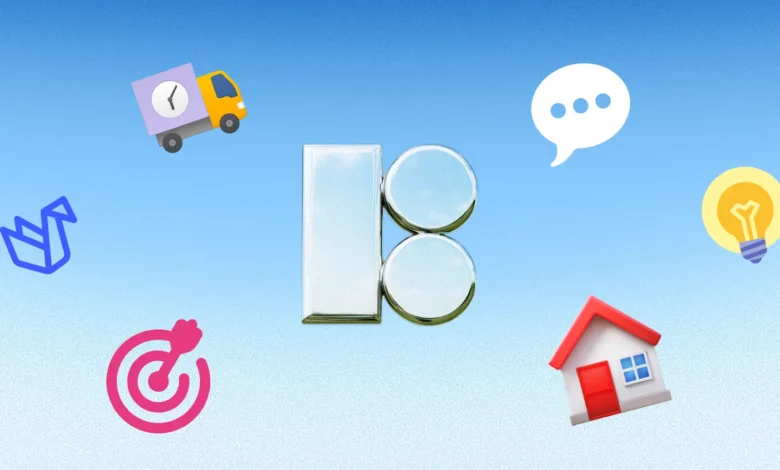Icons8: The Design Resource That Makes Sense

A Client Comment That Changed Everything
So I’m sitting in this client meeting last month, showing off a character-based game interface I’d been working on. The creative director takes one look and says, “Something feels disconnected here. These character elements don’t seem to share the same visual language.”
Man, she was right. I had villain icons from one library, hero badges from another source, and power-up symbols from wherever I could find them. Each looked decent on its own, but together? Complete visual chaos. Different artistic styles, inconsistent line weights, totally mismatched aesthetics. Classic beginner mistake.
That feedback hit home. Spent the following weekend researching alternatives, which is when I came across Icons8. At first glance, it seemed like just another icon marketplace boasting about its “1.42 million assets” collection, but was it using the platform? Entirely different story.
How They Solved Visual Consistency
Most icon platforms categorize content randomly. “Character icons,” “Game icons,” standard stuff. Icons8 took a more innovative approach by developing complete visual ecosystems. 45 different style families, each containing thousands of icons that genuinely complement each other.
Just wrapped up this adventure game project for an indie studio. Needed everything – character types, story elements, inventory items, UI components, achievement badges. Picked their “Doodle” style and everything clicked together perfectly. The same artistic personality is consistently applied, with matching stroke weights, consistent corner treatments, and a unified visual approach. Typically, this kind of icon hunt spans several weeks. This time? Single afternoon.
The technical execution stood out too. Their SVG code is genuinely clean—no weird nested chaos, no mysterious naming schemes. When I need to animate characters or modify paths, it’s logical and straightforward. Cuts down cleanup time significantly.
Format Coverage That Helps
They provide PNG, SVG, PDF, EPS, PSD, AI – essentially every format you’d need. Useful since I’m constantly moving between web development (requiring SVGs), print materials (EPS), rapid prototypes (PNG), and mobile apps (multiple resolutions). Typically means hitting different sites repeatedly. Here it’s all centralized.
They grasp platform specifics, too. iOS has specific visual requirements, Android follows different conventions, and desktop applications require their treatment. Same icon concept, but optimized adequately for each platform. Smart thinking.
API That Doesn’t Break
Technical aspect – their REST API functions reliably. I’ve implemented it across a dozen projects now, and never experienced significant failures. Dynamic icon switching, based on user preferences, operates smoothly with no performance impact.
Documentation is genuinely helpful. Real working code examples, not the typical broken samples most APIs offer. Covers icons, illustrations, photos, and music through one integration point. Significantly streamlines development.
Plugin Integration That Delivers
Their Figma plugin is where this excels. Over a million assets directly within your workspace. No more tab switching, no more file organization, no more “where’s that icon” hunting.
Currently working on this narrative-driven game – needed expressive character elements like robber emoji icons and other personality-rich symbols. Everything maintains consistent character design across all narrative components. Makes the whole storytelling experience feel cohesive rather than pieced together.
Productivity improvement is substantial. Used to bookmark twenty different icon sources, constantly interrupting workflow. Now that everything is integrated, I’m already designing.
AI Tools That Solve Real Problems
They’ve included AI features, such as Smart Upscaler, Background Remover, and Face Swapper. Sounds like marketing hype, but they’re practical. Background remover frequently outperforms Photoshop’s results. Clean edges, natural separation.
Smart Upscaler proved valuable recently when the client provided old character artwork that appeared pixelated at the required dimensions. Processed them through Icons8’s system – excellent results at any scale. Quick processing time, too.
Image search functions well – upload any photo, receive matching icon suggestions. Upload gaming environments, and get relevant character iconography instantly—simple approach, effective execution.
Real-World Applications
Enterprise Design Teams
Large companies benefit most since maintaining visual consistency across products becomes expensive when icons are dispersed. Icons8’s systematic methodology significantly reduces maintenance costs. Technical teams value clean code and predictable naming, which saves a substantial amount of time on major implementations.
Educational Environment
Free tier with attribution works excellently for students. They can develop professional-quality projects without budget limitations. Style libraries also demonstrate consistency principles very effectively.
Startup Context
When resources are constrained, this beats hiring icon specialists. Time savings alone validate subscription costs.
Honest Limitations
Pricing Concerns
Begins at $13 monthly. Not unreasonable, but it can accumulate for freelancers or students starting their careers. Free tier handles some scenarios, but professional work generally requires paid access.
Support Challenges
Customer service is weak. Billing problems persist indefinitely, and obtaining responses proves difficult. If you require dependable vendor support, this could prove frustrating.
Illustration Deficiencies
Icons are extensive, but illustrations remain sparse across most styles. If your projects demand substantial custom illustration work, you’ll likely need supplementary sources.
Technical Performance
Operates across web, Mac, Windows, and Linux platforms. Offline functionality proves essential when the internet becomes unreliable. Performance remains stable even during intensive usage, and doesn’t burden your system.
SVG quality stays consistently good. Minimal cleanup required compared to alternative sources. Naming conventions make logical sense, which assists implementation.
Strategic Implementation
Design Teams
Optimal value when consistency matters across large implementations. Teams developing design systems or maintaining brand coherence across multiple touchpoints experience immediate improvements.
Initial setup investment returns value through decreased maintenance and accelerated iteration cycles.
Development Teams
Clean code standards, predictable organization, dependable API functionality. These directly influence development speed and application performance.
Educational Applications
Excellent for teaching systematic design while providing students with professional-grade resources.
Final Thoughts
Icons8 transformed from a basic icon library into an essential design infrastructure. Support concerns and pricing limitations might prove deal-breaking for some, but the core product addresses genuine workflow challenges.
Primary strength lies in systematic consistency combined with solid technical execution. If you prioritize efficiency and quality in design workflows, this scales effectively across different project requirements.
Traditional icon hunting across random sites feels quite outdated now. This systematic approach is more effective in maintaining consistent design quality.
The platform isn’t perfect – what tool is? – but it resolved my biggest workflow challenge: locating icons that belong together visually. For someone designing character-driven interfaces regularly, that’s exceptionally valuable.
I’ve been using it for months now, and genuinely can’t imagine returning to the scattered methodology. Sometimes you encounter a tool that meshes with your workflow – this qualifies as one of those for me.



